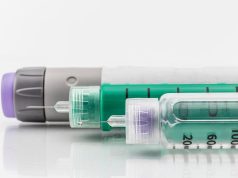First year after diagnosis poses greatest risk of progression to systemic lupus erythematosus
FRIDAY, April 3, 2015 (HealthDay News) — Pediatric discoid lupus erythematosus (DLE) carries a significant risk of progression to systemic lupus erythematosus (SLE), according to a review published in the April issue of the Journal of the American Academy of Dermatology.
Lisa M. Arkin, M.D., from the Northwestern University Feinberg School of Medicine in Chicago, and colleagues retrospectively reviewed 40 patients with DLE to assess the risk of progression.
The researchers found that 15 percent (six patients) of 40 patients presented with DLE as a manifestation of concurrent SLE. Nine of the remaining 34 patients (26 percent) eventually met SLE criteria, while 15 (44 percent) developed laboratory abnormalities without meeting SLE criteria. Skin-limited disease was only seen in 10 patients (29 percent). The greatest risk of progression to SLE was in the first year after DLE diagnosis, while the average age at progression was 11 years. The majority of patients (89 percent) with SLE met diagnostic criteria with mucocutaneous disease (discoid lesions, malar rash, oral and nasal ulcers, photosensitivity), positive antibodies, and/or cytopenia without developing end-organ damage.
“In pediatric patients, DLE carries a significant risk of progression to SLE but may predict a milder phenotype of systemic disease,” the authors write.
Copyright © 2015 HealthDay. All rights reserved.








